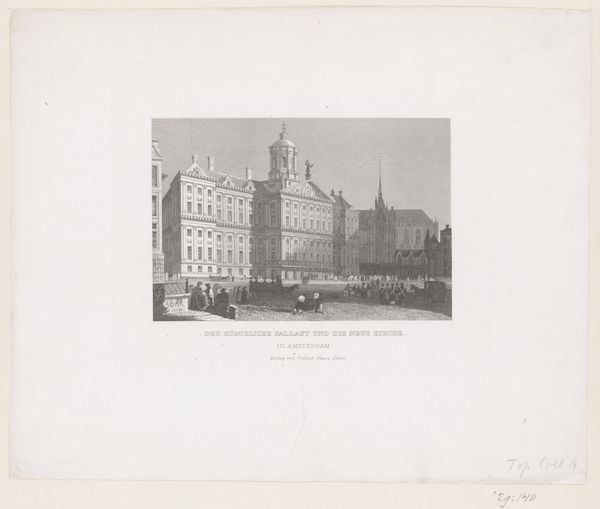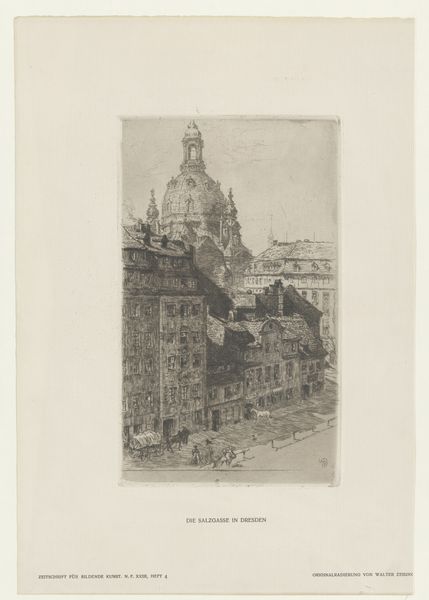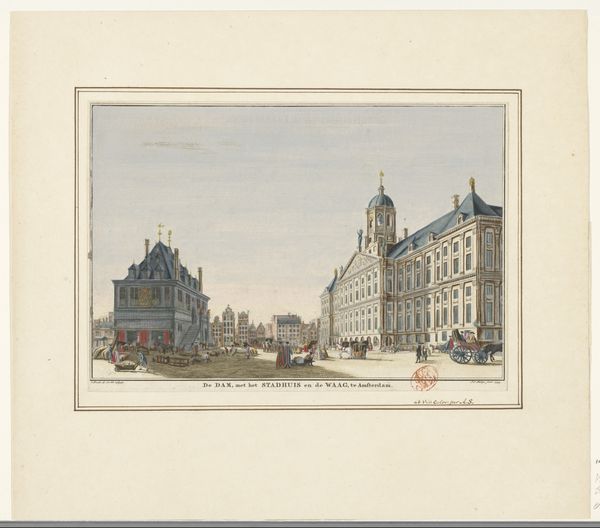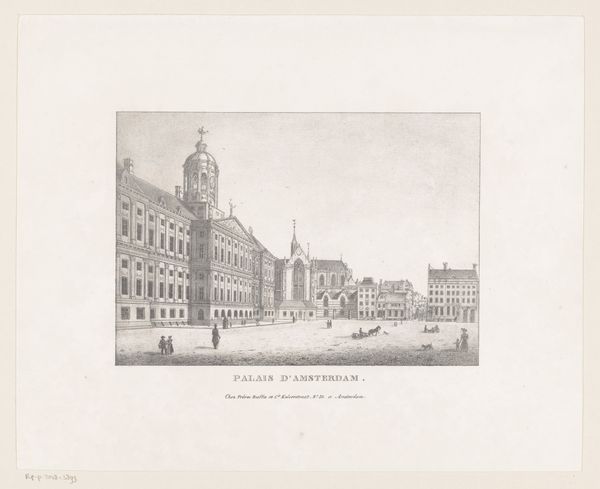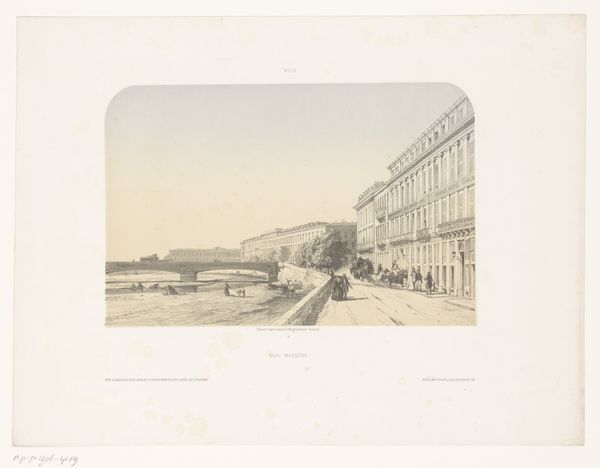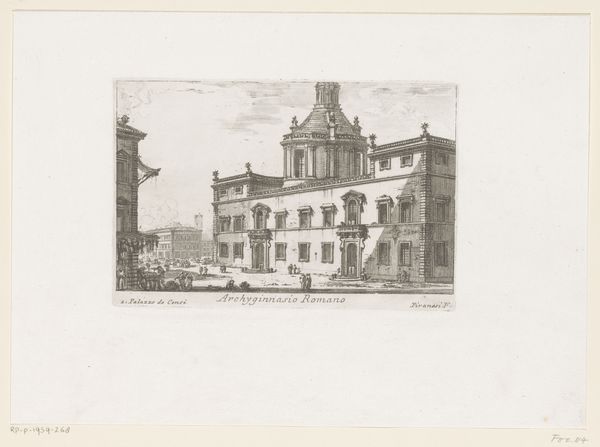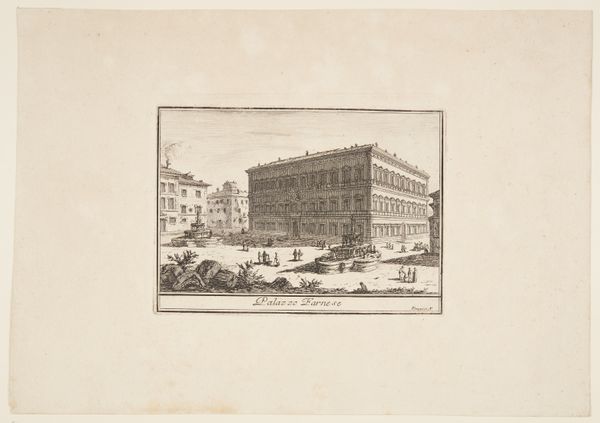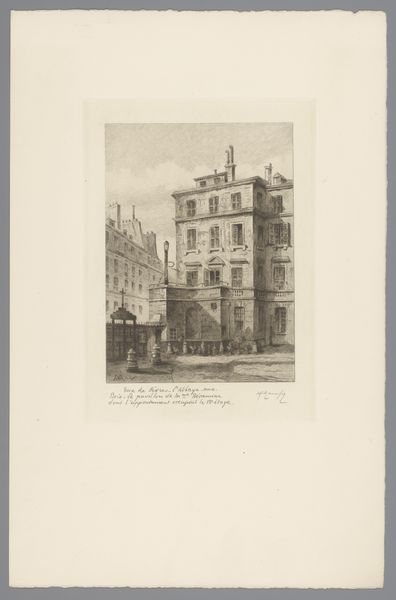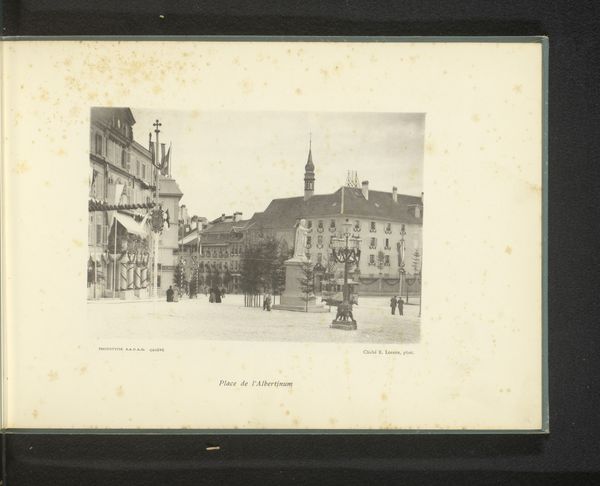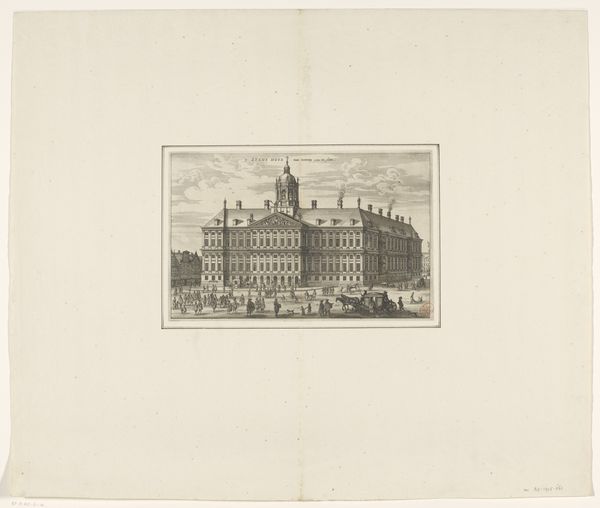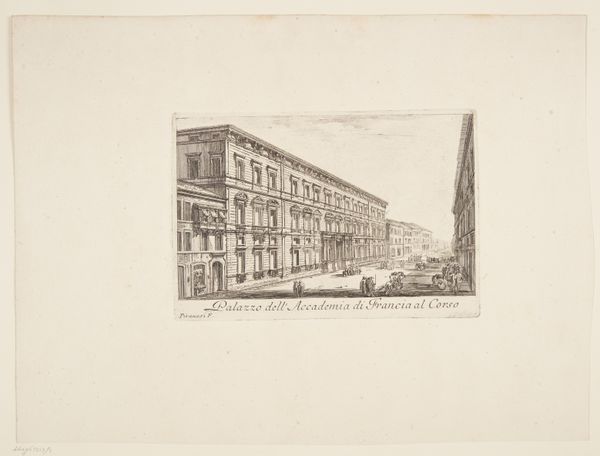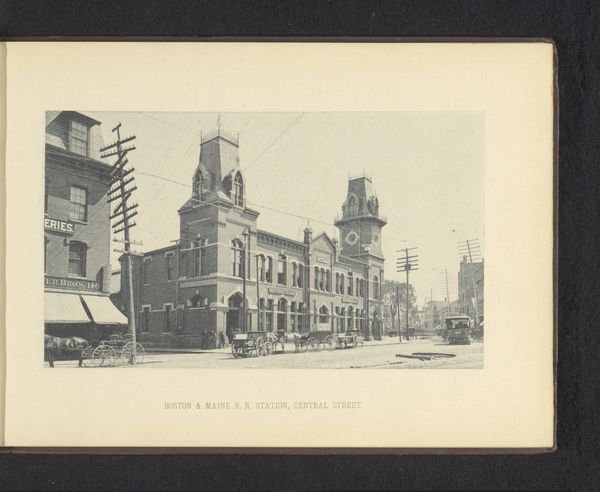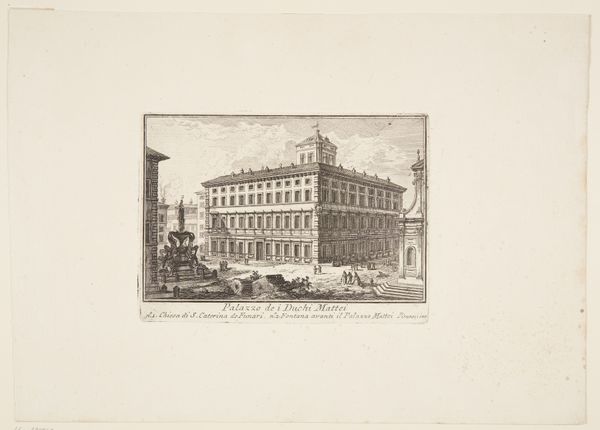
Paleis op de Dam in Amsterdam in de achttiende eeuw c. 1847 - 1863
0:00
0:00
johanneshilverdink
Rijksmuseum
drawing, print, etching, paper, engraving
#
drawing
#
neoclacissism
# print
#
etching
#
landscape
#
paper
#
cityscape
#
engraving
Dimensions: height 300 mm, width 386 mm
Copyright: Rijks Museum: Open Domain
Editor: So, here we have "Paleis op de Dam in Amsterdam in de achttiende eeuw" by Johannes Hilverdink, created sometime between 1847 and 1863, a cityscape rendered through etching and engraving. It feels so...precise. What architectural details capture your attention, Professor? Curator: The image speaks volumes about power and civic identity. Notice how the palace dominates the scene, a deliberate choice to visually reinforce the centralized authority. This representation, striving for clarity and order, attempts to connect to cultural memories of Roman Republican ideals. The Dam square itself, bustling yet orderly, acts as a stage for civic life. Do you notice any recurring visual elements, and what do they symbolize to you? Editor: Well, there’s a definite emphasis on geometric forms—everything feels very structured and balanced. The people are rendered almost as miniature figures, contributing to the grandeur of the architecture. What do you think about the light? It looks really even. Curator: Exactly! That even light depersonalizes the scene, creating a sense of timelessness. The artist doesn’t want you to focus on fleeting moments, but on the enduring symbolic weight of the place. Consider the use of linear perspective—it draws the eye directly to the Palace, emphasizing its role as the focal point of the city’s and perhaps nation's identity. The precision implies that a sense of national pride is to be gained by depicting reality, though of course through a constructed, edited reality. What might the buildings shown together symbolize for citizens viewing the image? Editor: That's so interesting! I hadn’t considered how the composition itself is arguing for that civic identity. It all feels deliberate now that you mention it! Curator: Precisely! Visual culture can shape, rather than simply reflect, our understanding of collective values. The past as inspiration for the present. Editor: I see what you mean. Thanks for clarifying the visual history. It completely changed my perspective!
Comments
No comments
Be the first to comment and join the conversation on the ultimate creative platform.
